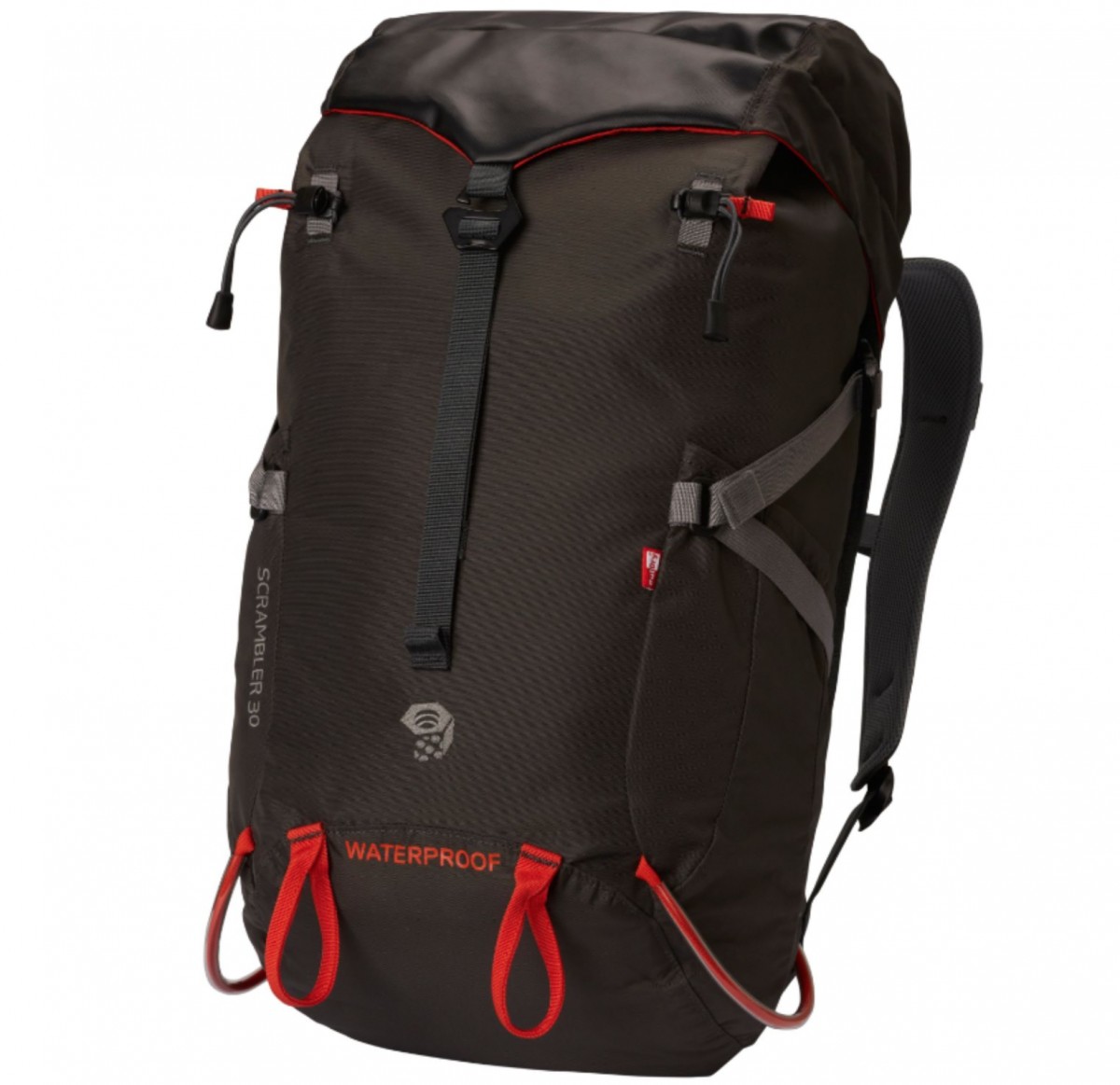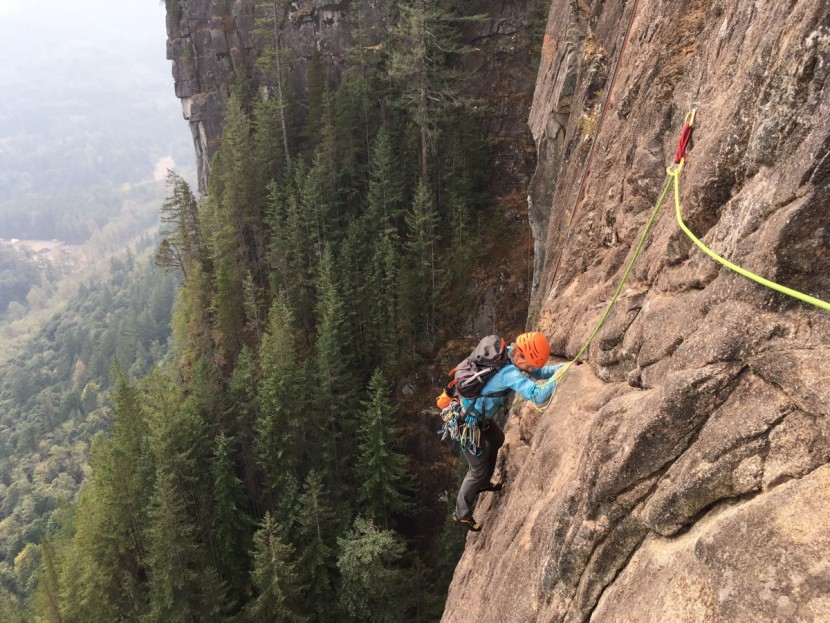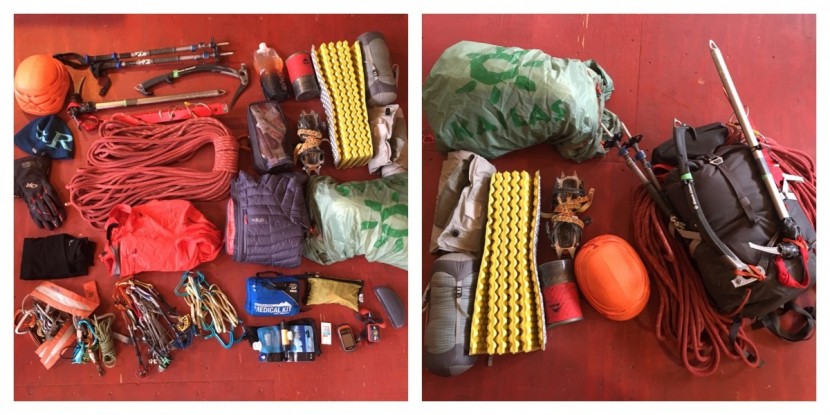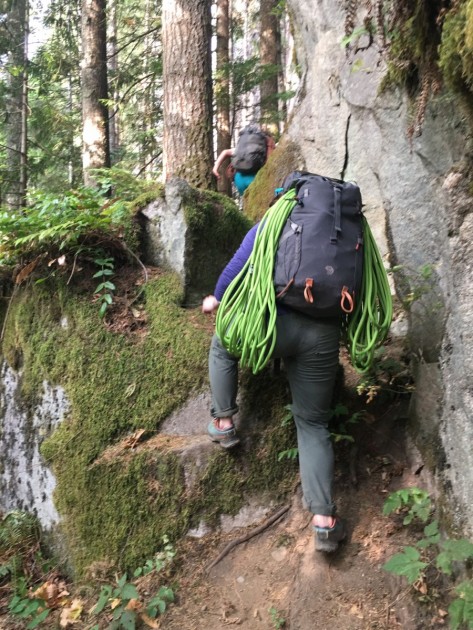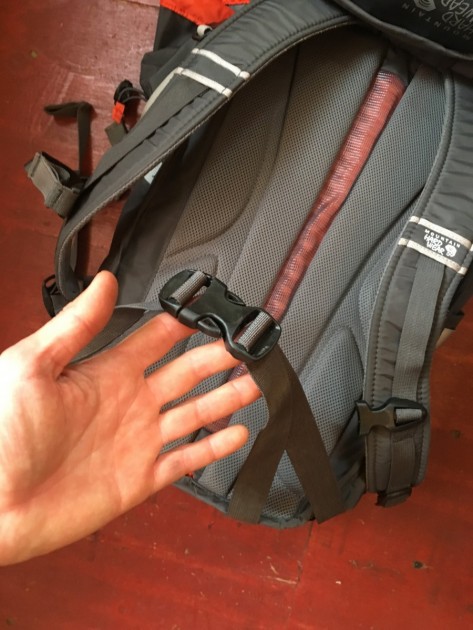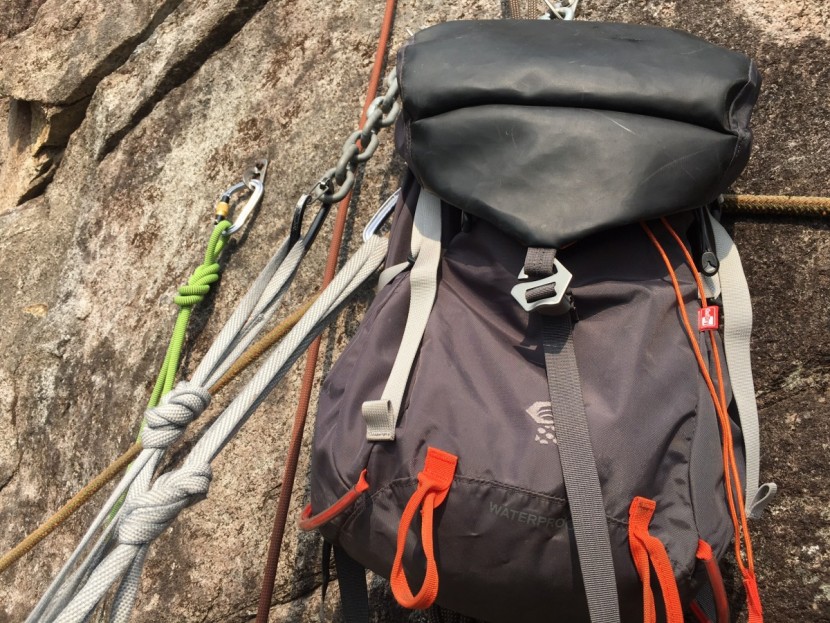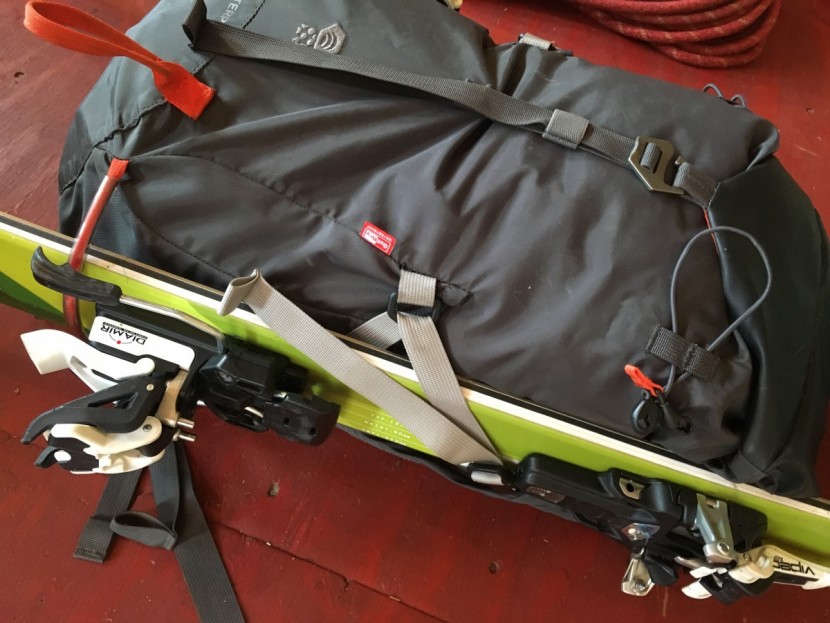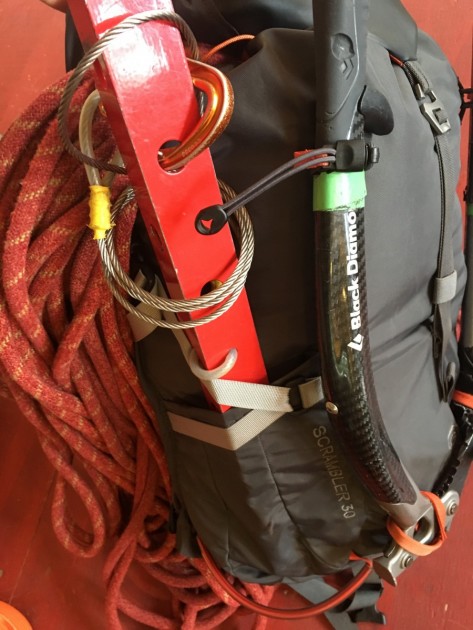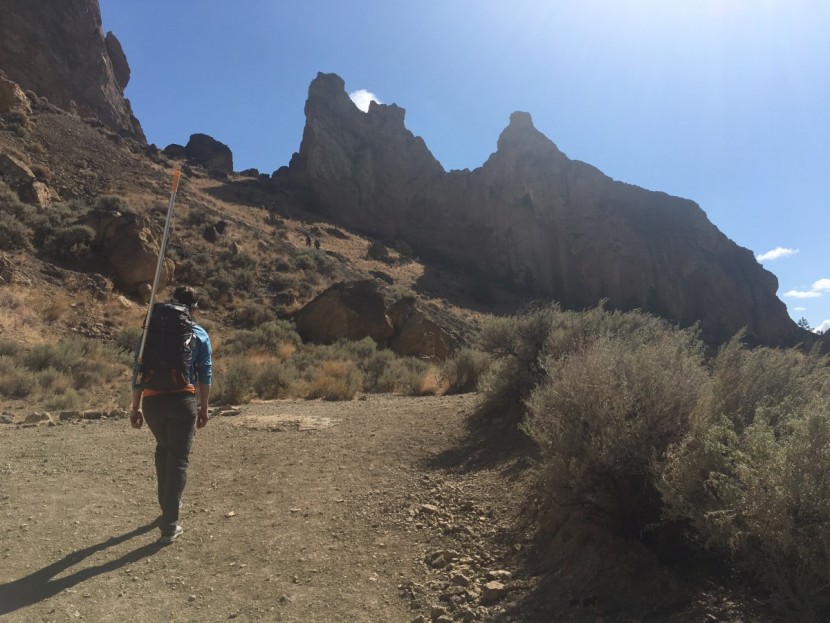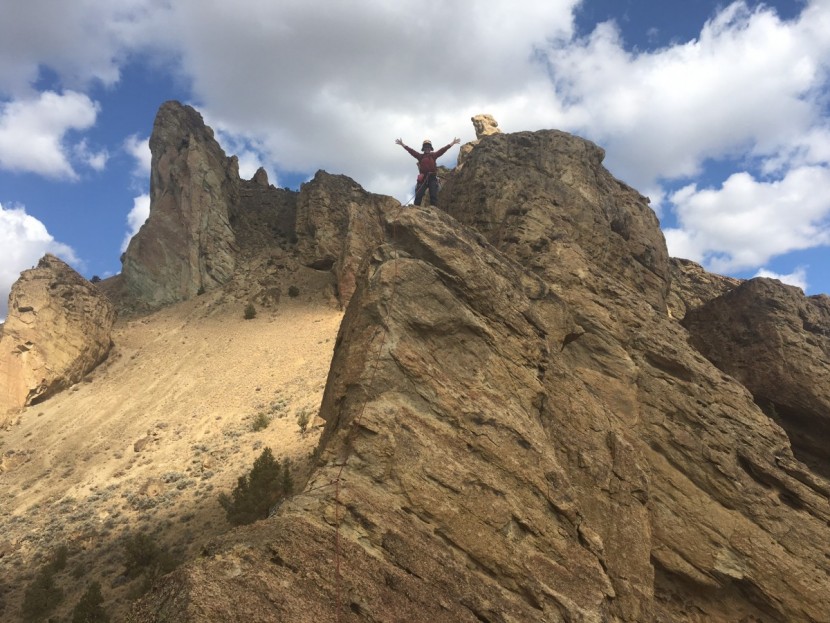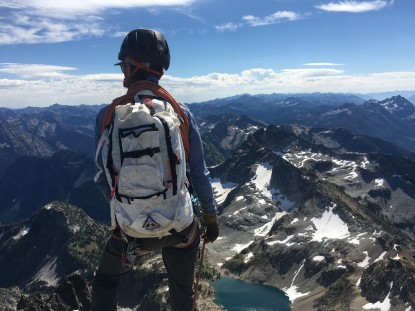Mountain Hardwear Scrambler 30 Outdry Review
Our Verdict
Our Analysis and Test Results
The Mountain Scrambler is a durable, small backpack that proved a reliable companion on long rock routes with relatively short approaches. It is a specific-use pack, but it can bumble through a lot of climbing activities in a pinch.
Weight-To-Volume Ratio
The Scrambler surprised us in this metric. At first glance, and first feel, it seemed like a relatively heavy pack. The lid is made of a very rugged and thick material and made the small size of the pack seem dense and heavy.
When we ran it through our measurements and calculated the weight to volume ratio, however, it ranked fourth in this review. And this is a style of pack that we want to be lightweight—because it is the perfect size to carry on long multi-pitch rock climbs. Ultimately, this proved to be one our favorite packs for long rock climbs. It was our go-to pick for multi-pitch rock climbs with relatively short approaches, but it can indeed be stretched into the alpine rock realm, and can even carry skis comfortably.
For a lighter weight option, though far less durable, check out the Black Diamond Blitz 28. This was another favorite pack for on-route comfort and simplicity.
Comfort
This pack is best suited to smaller frames, but many larger climbers liked it as well. The shape of the pack is short and squat, making it better for those with shorter torso lengths. It has no load lifter straps, so you will want to pack heavy items close to your back and be careful not to overstuff it. Compared to the Osprey Packs Mutant 38 and the Arc'teryx Alpha FL 45, this pack is not nearly as comfortable—though it has a similar design concept to the Alpha, with no load lifter straps on the shoulders. This is ironic, because it is also a lot smaller, so one would think this would make it easier to ensure carrying comfort.
But in our field tests, this pack often pulled on our shoulders. And the “hip belt” is just an inch wide piece of webbing that we nicknamed the “belly belt” because it cinched right around our stomach and offered little to no support. This belt did, however, serve well on rock climbs when the pack was very light—it helped keep it securely situated on our backs when pulling 5.10 moves high off the ground.
Our favorite comfort feature on this pack was the highly breathable, thin but supportive back panel; it is a unique design that worked well and looked cool for our urban missions as well.
Durability
Perfect 10! This pack is rugged!
We managed to round up some users who have had this pack for a year or more (and used it for skiing and climbing missions regularly) and when we set it next to ours when it was brand new, the older pack still looked very good. This contributes to our enthusiasm for this model as a daily commuter or a general urban adventurer pack that moonlights as a technical climbing or skiing pack.
We also loved this pack for multi-pitch rock climbs, and never thought twice about scratching it up rock faces. We didn't even worry about making it look less presentable for urban use—it held up so well to the abuse.
Versatility
Along with the expedition packs in this review, the Scrambler was among the least versatile. While we could take it on a lot of our adventures, it was often a stretch to make it work. The volume is not enough for any overnight trips with climbing gear, and it cannot be overstuffed, so that limits it to day trip use. Sometimes we even struggled to get our climbing gear in it for a day of cragging — especially if we were carrying any big cams to climb wide cracks.
If you're looking for a pack that is versatile regarding activity type but not concerning activity length, then this could be a good fit for you. You can make it work for a day of spring ski touring, you could carry it on a few pitches of ice climbing, and you can take it up an extended rock route. But you will quickly reach the maximum capacity of this pack if you head out overnight or need extra layers, or food and a thermos for colder missions, which is when we often pulled out our award-winning Osprey Mutant 38.
This pack is also sometimes touted as waterproof, which it is not. The lid is made of a spectacularly rugged and waterproof material, but the zipper is not waterproof. We loved this pack for urban bike missions and day hikes in particular, but don't plan to ride around town in a downpour and arrive with the contents perfectly dry.
Features
The weirdest feature on this pack was the sewn lid. When normally packed, not even overstuffed, the lid often wouldn't seat fully over the opening of the main compartment. And the compression strap with hook-and-loop closure is long enough to connect even when overstuffed—but that would leave the lid almost completely open; it's a very odd design. Perhaps it would be better if the lid was not sewn on so the whole brain of the pack could rise up higher and compress the contents even more.
We were very frustrated that this pack didn't have a crucial keeper strap. Since there are only two pockets — the main compartment and a relatively large lid pocket — there was nowhere secure to put our keys. We prefer to leave keys on our cars at trailheads whenever we can, but some of our favorite crags, like Index in Washington, are close enough to urban environments that we usually carry car keys with us. And Index was the perfect venue for this pack: relatively short but steep approaches to long rock routes.
Once we launched off the ground, that lid pocket was perfect for stashing snacks, and the main compartment could easily carry water and layers for a climbing party of two or even three. But the lid was the prominent place to stash keys, and every time we rummaged around for a snack, we had to be extra careful we didn't search too rough and accidentally flung our keys several hundred feet down the rock face. This proves surprisingly tricky when you're doing several things at once, and one of those things is the immensely crucial task of belaying your lead climber.
We mentioned the small, thin hip belt in the comfort section, but it is worth re-stating here that it is not much of a hip belt. It secures the pack for technical rock movement, but it does not distribute any weight to your hips when hiking with a full model. This hip belt does, however, tuck into little sleeves at the base of the back panel, which we appreciated. This made the pack more sleek and stylish for urban use, whether cafe-hopping or bike commuting — this contender turned in to one of our favorite models for very general purposes, and which can also be used for a multitude of day trips in the mountains.
Best Applications
The Scrambler is an excellent pack for multi-pitch rock climbs with short to mid-length approaches (under a few hours). Some testers liked it for short day ski tours, but it is not the ideal pack for that use. It is also a great around-town and commuter backpack, comfortable for cycling. It is not waterproof due to the zipper on the lid, but it is rugged enough to be dragged up rock climbs and still look very presentable at the cafe in town.
Value
If this pack matches your uses, it is a great value. It is so durable it'll last several years of hard use and still look good around town.
Conclusion
We tried hard to dislike this pack because some things just didn't add up: it's kind of small for general mountaineering use, it doesn't over-stuff elegantly, it lacks some surprisingly useful features like a key clipper, and the hip belt is a useless belly belt. But we found ourselves gravitating toward it time and time again. It is durable, rests comfortably and secure on our backs for rock climbing, and is the perfect size for urban missions. It is very simple, with only two pockets to rifle through to find your snacks or water, and it has a cool hidden sleeve for a hydration bladder or laptop. This is a great urban-mountain crossover backpack.


